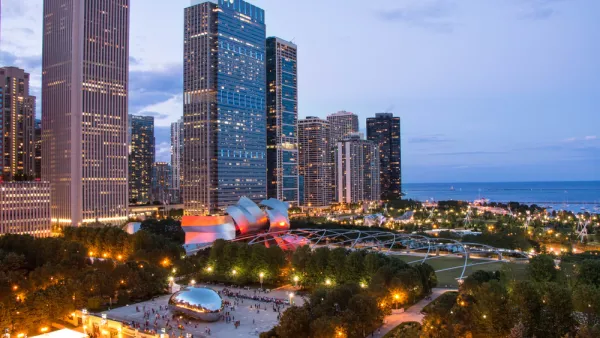Christopher Hawthrone discusses the rise of a "quiet style" in architecture that returns to basic shapes and resists the urge to look futuristic.

On what he calls "the most important emerging strain in contemporary architecture," Christopher Hawthrone writes, "This is an approach that rejects the hyperactive form-making of celebrated architects like Thom Mayne [...], Daniel Libeskind, the late Zaha Hadid and others in favor of work that is spare, solid and unhurried."
The emerging style, typified by the work of architects like Chile's Mauricio Pezo and Sofía von Ellrichshausen, Portugal’s Aires Mateus, and the Swiss firms Christ & Gantenbein and Office Kersten Geers David Van Severen, embraces a quiet solidity. Hawthrone writes, "there's something archetypal about this architecture. [...] It’s post-digital, which means it rejects the compulsion to push form-making to its absolute limits that overtook architecture at the turn of the century. As a result, it sometimes looks ancient or even primordial. It never looks futuristic."
Hawthorne concludes with a word of praise for the "boring" style. "I for one think architects should embrace the boring charge. [...] the spirit of this new work, its power, comes in part from what it's reacting to — the overloud, overwrought, mostly male voices it has already managed to mute."
FULL STORY: Boring architecture? Yes, please

National Parks Layoffs Will Cause Communities to Lose Billions
Thousands of essential park workers were laid off this week, just before the busy spring break season.

Retro-silient?: America’s First “Eco-burb,” The Woodlands Turns 50
A master-planned community north of Houston offers lessons on green infrastructure and resilient design, but falls short of its founder’s lofty affordability and walkability goals.

Delivering for America Plan Will Downgrade Mail Service in at Least 49.5 Percent of Zip Codes
Republican and Democrat lawmakers criticize the plan for its disproportionate negative impact on rural communities.

Test News Post 1
This is a summary

Test News Headline 46
Test for the image on the front page.

Balancing Bombs and Butterflies: How the National Guard Protects a Rare Species
The National Guard at Fort Indiantown Gap uses GIS technology and land management strategies to balance military training with conservation efforts, ensuring the survival of the rare eastern regal fritillary butterfly.
Urban Design for Planners 1: Software Tools
This six-course series explores essential urban design concepts using open source software and equips planners with the tools they need to participate fully in the urban design process.
Planning for Universal Design
Learn the tools for implementing Universal Design in planning regulations.
EMC Planning Group, Inc.
Planetizen
Planetizen
Mpact (formerly Rail~Volution)
Great Falls Development Authority, Inc.
HUDs Office of Policy Development and Research
NYU Wagner Graduate School of Public Service





























